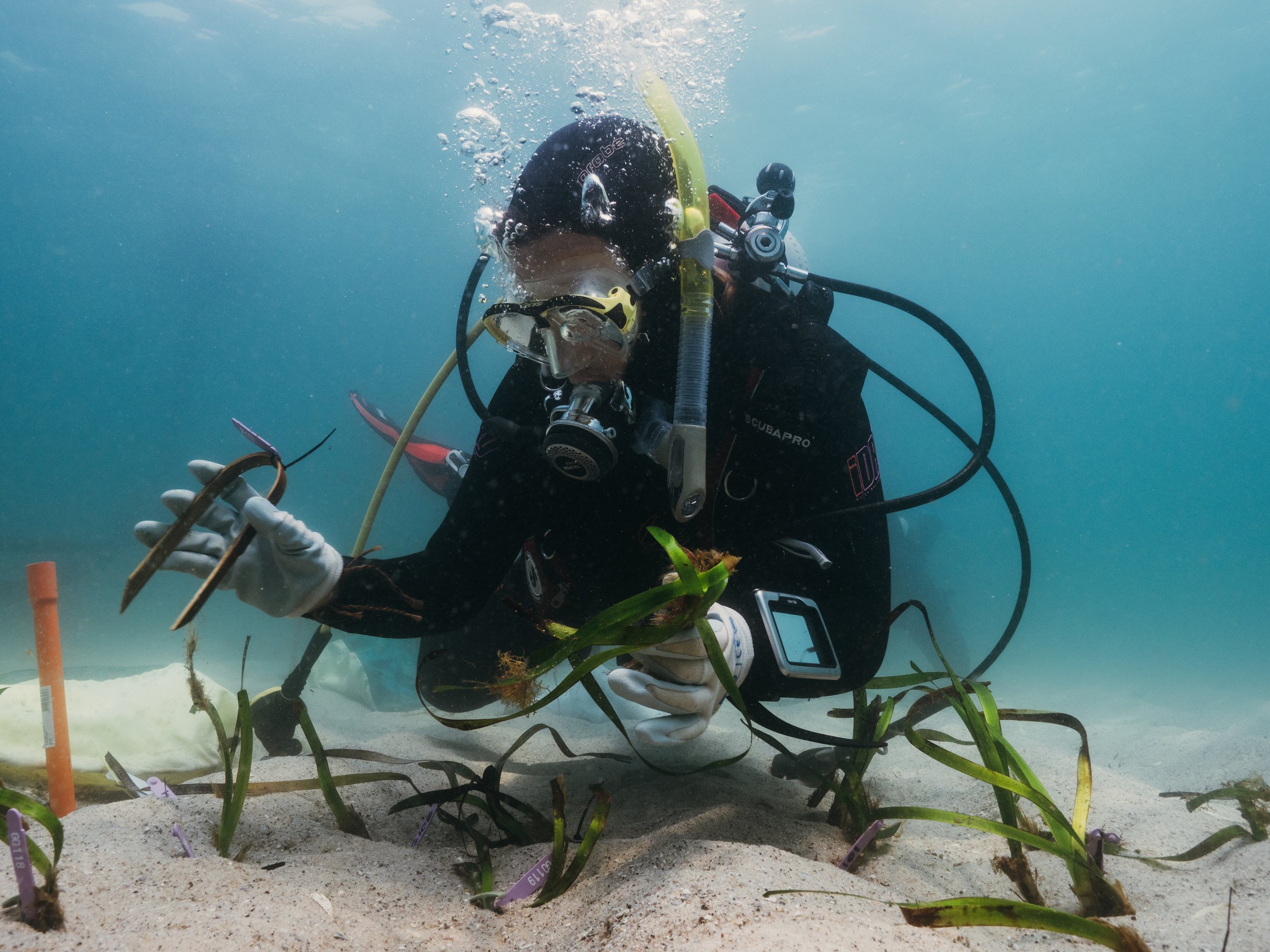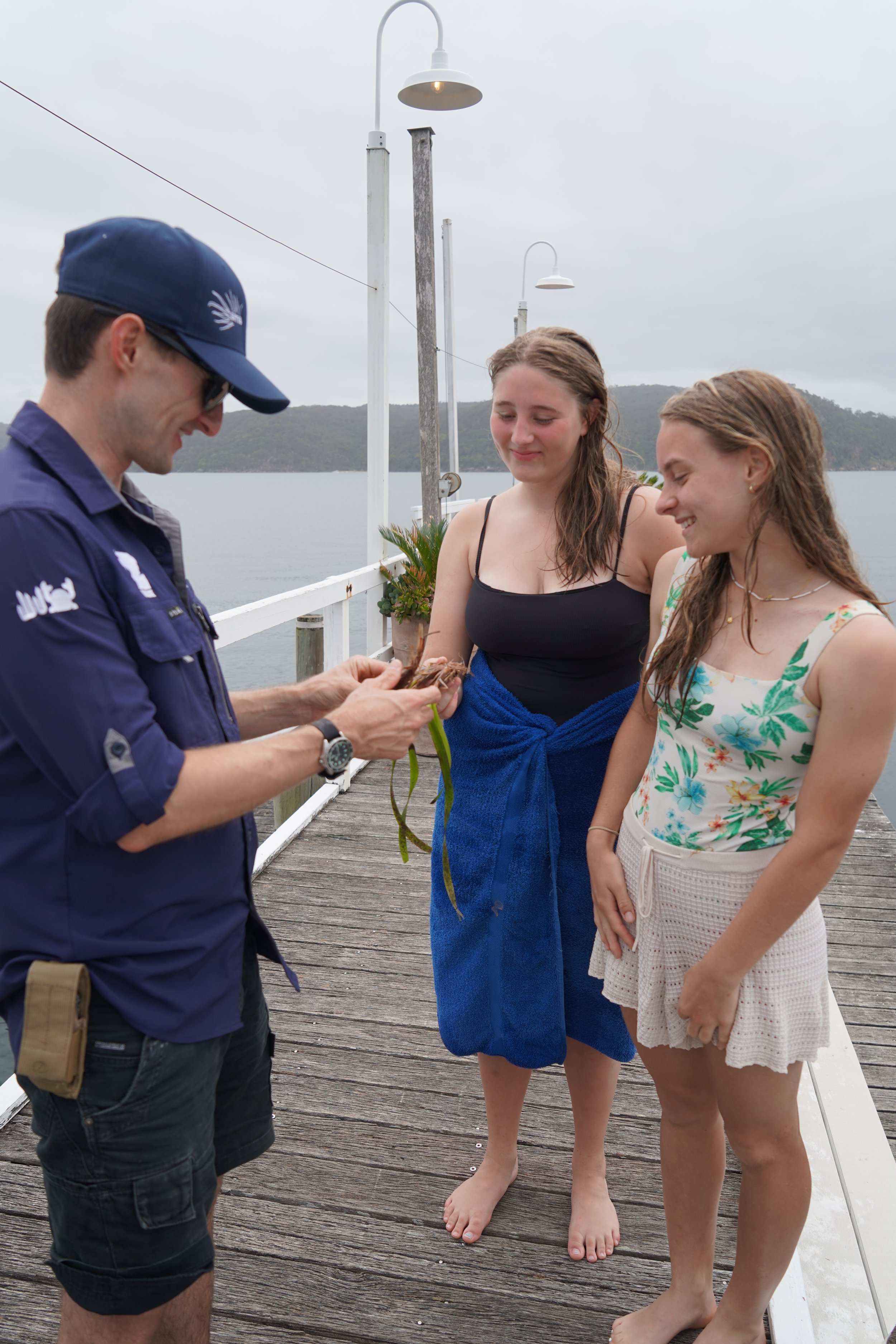Valuing our marine meadows
Replanting Beach-cast Fragments
In NSW, Posidonia rarely reproduces sexually and lacks enough viable seeds, making it challenging to grow it in captivity or restore it by using seeds. Harvesting from natural meadows is also difficult since it is a protected species. However, storms and large swells naturally dislodge seagrass fragments, which wash ashore and are deposited on beaches. Seagrass wrack supports a diverse community of organisms, such as insects, crustaceans, amphipods, and even birds. However, if ‘rescued’ in time, alive sea grass fragments can be replanted underwater. Operation Posidonia uses some of these beach-cast fragments for restoration, planting them in areas where they once grew, including old mooring scars.
To collect these beach-cast fragments for restoration, the Operation Posidonia team often relies on citizen scientists (the Storm Squad), so please visit the Get Involved page if you want to learn more!
Environmentally Friendly Moorings
Environmentally Friendly Moorings
The only way to prevent damage to the marine environment by boat moorings is to change their design so that no components are dragging along the seafloor.
In recent years, a variety of mooring designs have emerged that prevent chains from dragging along the seafloor. These new types of moorings are collectively known as Environmentally Friendly Moorings (EFMs) or also Environmentally Sensitive (ES) Moorings, and they are slowly replacing traditional block and chain moorings in many coastlines worldwide, but are not yet used extensively in New South Wales. Much research is going into developing the safest options for both seagrass and boat owners.
Protecting what we have left is critical
Protecting the remaining Posidonia australis in New South Wales is far more effective than relying on restoration, especially when combined with strong community engagement and outreach. These seagrass meadows are incredibly slow-growing and can take centuries to recover, if they recover at all. Restoration projects are costly and time-consuming. In contrast, preventing further damage - particularly from avoidable impacts like boat anchoring - offers immediate and long-lasting benefits.
Outreach and education play a critical role in this. When local communities, boaters, and recreational users understand the ecological importance of Posidonia australis - as habitat for marine life, a stabiliser of sediments, and a powerful carbon sink - they are far more likely to engage and become part of the solution. Simple actions, like avoiding anchoring in sensitive areas or supporting the installation of Environmentally Friendly Moorings, can make a huge difference. A big part of Operation Posidonia is engaging coastal communities to foster a sense of stewardship and shared responsibility, making conservation more effective and long-term. Protecting what remains through awareness, community events, and collaboration with local stakeholders is not only more practical than restoration, it is essential.
Restoration and research are underway
Once mooring chains are removed, however, the natural revegetation of bare patches by Posidonia can be very slow, especially when mooring scars have expanded and altered local hydrodynamics. In some places, it could take over 20 years for a mooring scar to be revegetated by Posidonia naturally. We aim to give nature a helping hand and promote the recovery of Posidonia by combining the restoration of Posidonia in old mooring scars where swing moorings have been removed.
Efforts in Posidonia australis restoration in NSW are currently occurring in Sydney Harbour by Project Restore and in Gamay Botany Bay by the Kamay Ferry Wharves Offset Project, both of which are applying the Operation Posidonia methods of beach cast shoot collection and re-planting.
The scientists behind Operation Posidonia have completed and published much scientific research, planting beach-cast fragments in old mooring scars in Port Stephens, to show that this method can work. The team is now focusing on establishing the genetic relationships between Posidonia australis populations along the NSW coast, to inform conservation and restoration efforts, as well as further understanding the resilience of this species to climate change. Moreover, projects on improving planting success by stabilising moving sediment with novel engineering structures are underway. For more information, head to the Current Projects section, and follow the team’s progress on our social channels!






